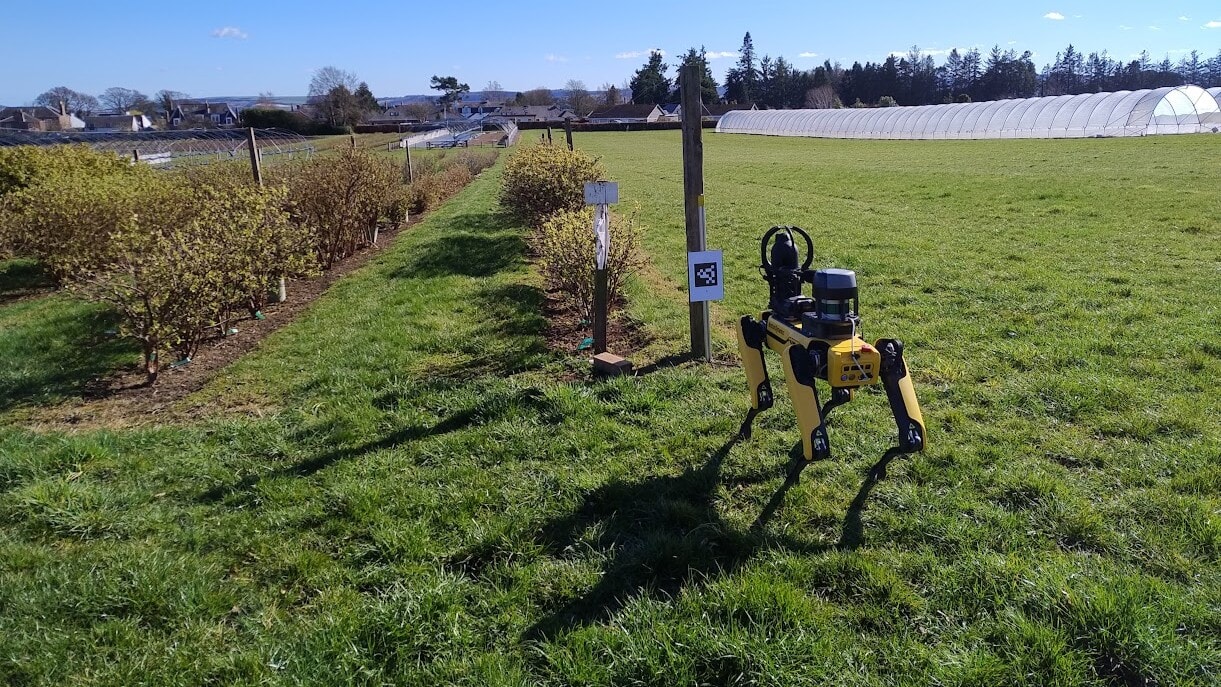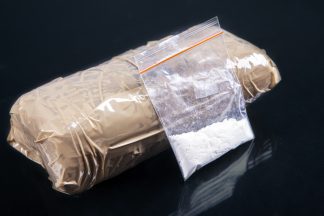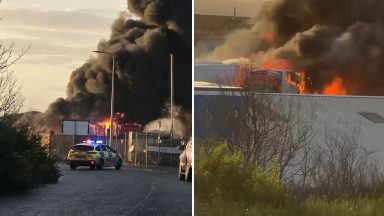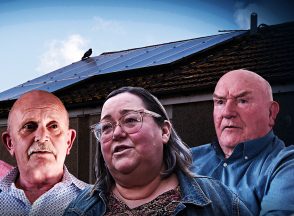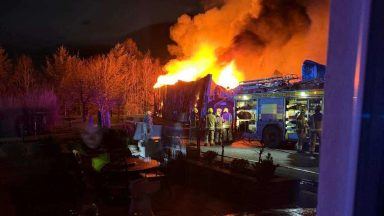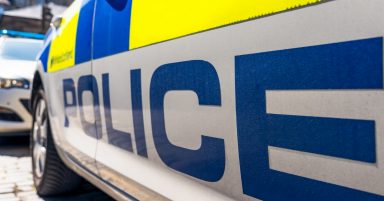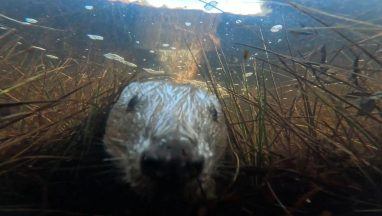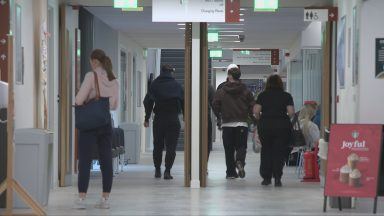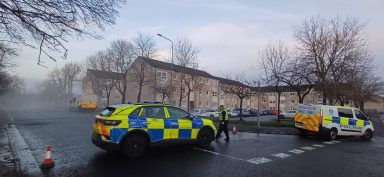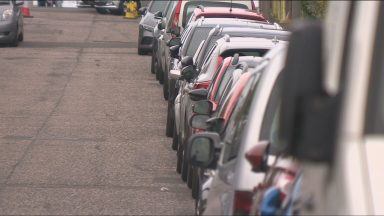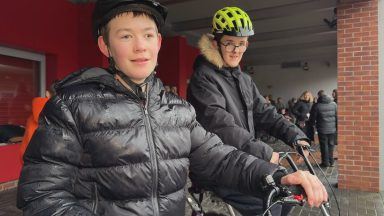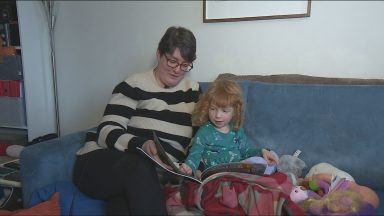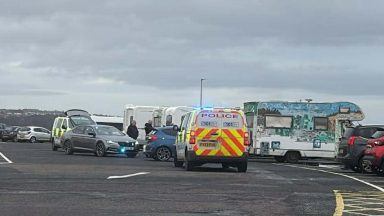Robot dogs could become a common sight in our fields thanks to developments in portable 5G networks.
Developed to support farmers get real time information on the health of their crops and soil, researchers say robotics could become a valuable tool for those farming in remote and challenging areas.
These robot dogs can navigate rough terrain and carries a scanner able to capture valuable data.
Now, thanks to a team collaboration in Scotland, they can be rapidly deployed using high speed 5G in remote areas and allow operators to see exactly what they can see in real time.
STV News visited the Heriot-Watt University’s National Robotarium in Edinburgh to see the technology in action.
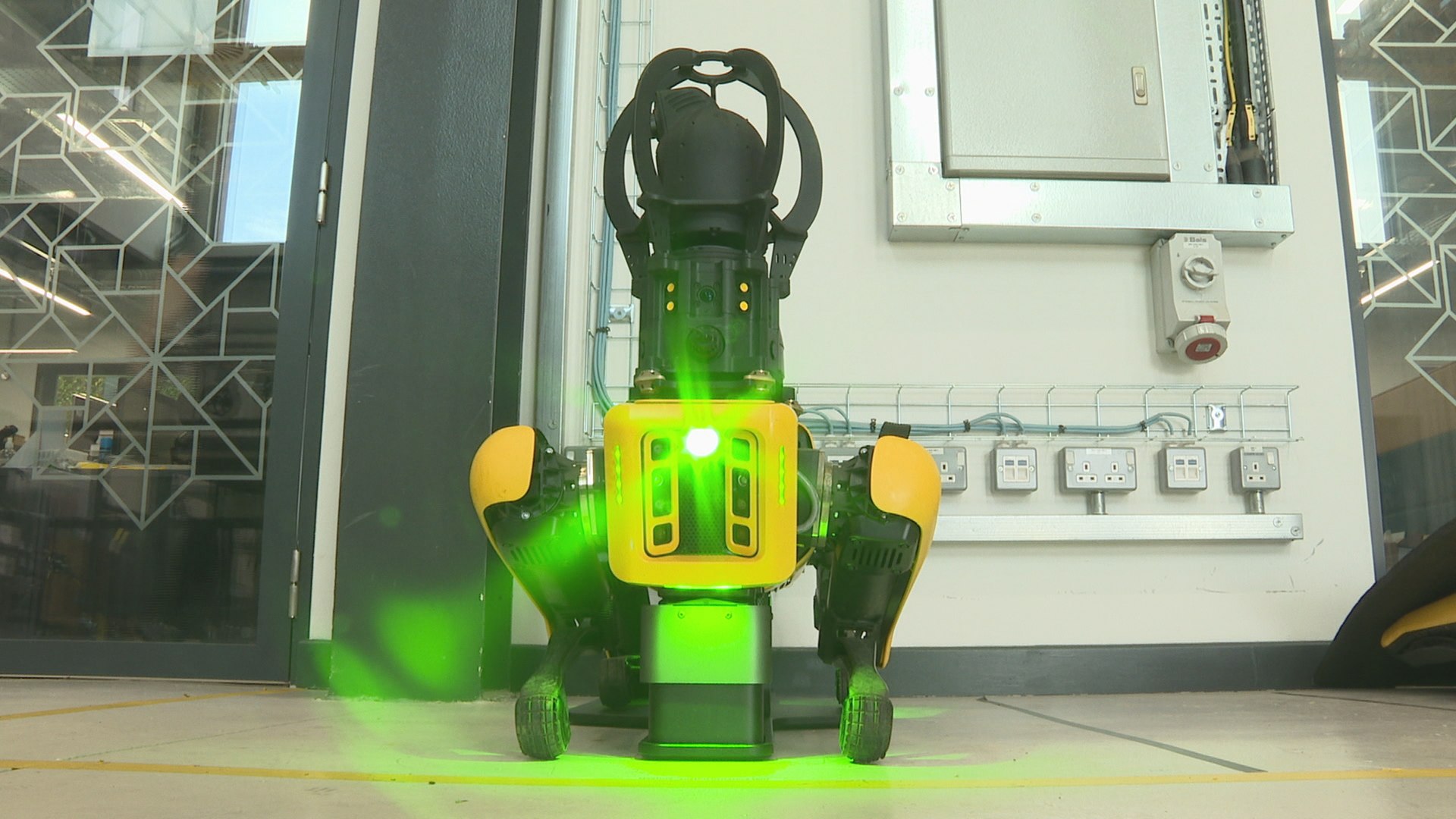 STV News
STV NewsProject manager Ruth Plant said: “It’s taking that gaming virtual reality kind of headset, that immersive user experience but being able to use that to control the robot from a remote location to benefit different sectors and different industries. The use cases and the applications for that are humongous.
“It could be used in agricultural settings, healthcare, construction sites – anywhere where you think it might be safer for robots to go to rather than humans.”
These advanced 5G connections mean the robots can be run in pretty much any location and can now also communicate with other robots.
Scotland 5G Centre’s head of business development Ian Sharp said: “You can now pop up a private 5G network, backhaul it to satellite and you’ve got connectivity in a specific region.
“What you’re seeing at today’s event is how you can take a robotics system, put it into a rural setting where there’s perhaps no connectivity and you can actually create something that drives productivity whether it’s ag-tech, food production or farming.”
Between them, robotic dogs Spot and Tom can deliver precise plant counts and deliver extremely high-resolution plant images.
The robots can perform highly complex scanning tasks in challenging conditions, such as monitoring crops and soil significantly faster than traditional methods.
 STV News
STV NewsAgronomist and agritech specialist Andrew Christie said: “The data that’s being collected allows us to deal with shocks with weather. Any stresses on the crop can be monitored much more closely so that we’re not seeing the symptoms, but we’re seeing the symptoms before they actually happen.
“At the moment, it’s being used more in research than in real agriculture, but we can see the direction of travel to it being used in commercial operations.”
They estimate robots like Spot and Tom will be a regular sight in our fields within the next five to ten years.
Visual recognition systems are also currently under development, meaning that soon, robots will also be able to identify issues such as disease, pest infestations or water stress.
And their potential beyond that remains significant.
Or, in the words of Ameca, one of today’s most advanced humanoid robots: “Robots like Spot can perform inspections, carry loads, map environments and even assist in search and rescue operations. They’re really quite versatile.”
Follow STV News on WhatsApp
Scan the QR code on your mobile device for all the latest news from around the country


